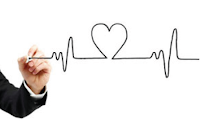Why Heart Rate Monitors?
For the average weekend warrior, a heart rate monitor (or HRM) often ends
up as a sporty fashion accessory, an expensive stop watch, or calorie counter. Whilst there is absolutely nothing wrong with this, there are other ways in which this training tool can help assist you with progressing your fitness.
So what is your maximum heart rate?
There are many ways in which this can be determined; however, as a very basic guide, simply subtract your age from 220. For example, if you are 40 years of age, 220 – 40
= 180. Therefore your maximum heart rate is 180 beats per minute.
Here are two ways you can maximise your training using a heart rate monitor.
Tempo Training: Using running as an example, you may decide to run at a pace that keeps your heart rate at 75-80% of your maximum heart rate.
Using the above example would be 75-80% of 180bpm. This would equate to between 135 and 144 beats per minute. Therefore you could set your HRM to beep if your heart
rate goes above or below this.
Interval Training: Still with running as our example, run at your absolute maximum pace for 30 seconds, set your HRM to a ‘recovered’ heart rate. For example your breathing and body is recovered enough that you are ready to complete another 30 second interval. This might be 100 beats per minute. Your HRM would beep once
your heart rate went below this.
That ‘beep’ is your indicator to start your next 30 second maximum pace interval.
02 fitness 02 fitness 02 fitness 02 fitness 02 fitness 02 fitnes













Yorumlar
Yorum Gönder